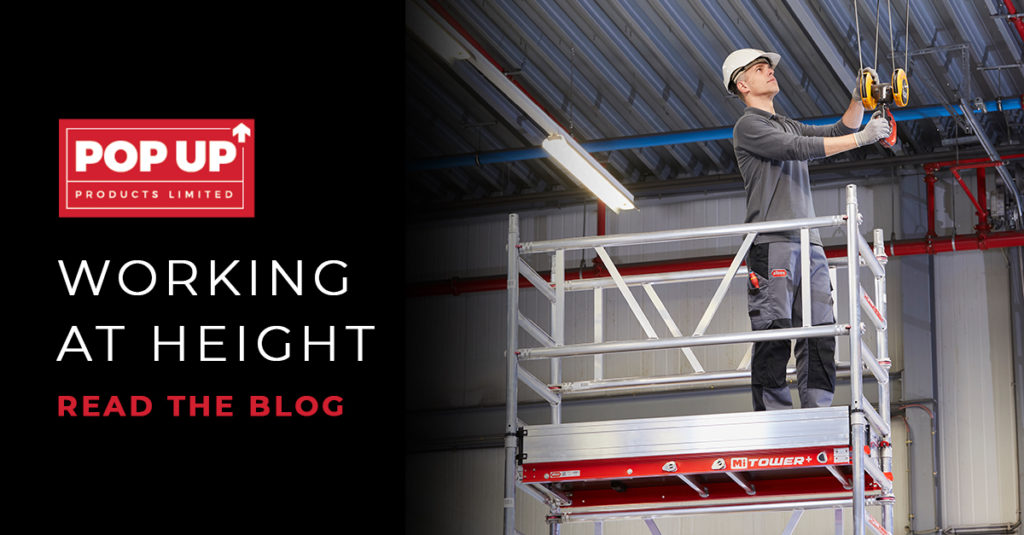- News & Articles
-
Products
Product Ranges
Product Categories
- Hire
- Buy
- About
- Resources
- After Sales Service
- Make an Enquiry

There are many hazards we come across in the workplace, a quick google search will return a multitude of different results. You will find hazards relating to working at height in that search almost every time and if it isn’t on the list your looking at, it probably should be!
We all know that what goes up, must come down and preferably both journeys, along with the time in between, should be made as safe as possible.
The Health and Safety Executive defines working at height as “Work in any place where, if precautions were not taken, a person could fall a distance liable to cause personal injury.”
http://www.hse.gov.uk/work-at-height/faqs.htm
You are working at height if you:
It is not only those who work at height who are at risk when work at height is undertaken.
Considering all the risks can be quite the challenge, whether you are an employer, an end-user or any other position really, as they say – health and safety is all our responsibilities.
Here at Pop Up Products we want to share our combined expertise we have therefore put together this handy list of common hazards for working at height.
Here are some of the main hazards of working at height, remember there is no full list as each situation will have its own unique possibilities.
That’s right, the first thing you thought of is first on our list. Falling from a height larger than 2m is likely to cause a lifelong injury/fatality to you, your colleagues or even passers by.
Without a toe board or other form of protection to stop something falling to a lower level, you risk injuring someone below. For example, an object falling 10m will hit the ground less than 2 seconds later at nearly 30mph – not enough time to remind someone to put their hard hat on!
It’s not just the distance from the ground you need to worry about, the ease of powered access allowing users to adjust their height on a whim, it becomes easy to hit your head on something above you or get caught on a sharp object from the side. Be cautious of what is above, around and below you always.
Another risk that can be easily overlooked is the strength of the surface you’re working on, have you read the manufacturers guidance on how much weight is allowed on the scaffold/platform you’re working on? Are you on a fragile roof? Do you need netting or a fall protection harness?
Predicting whether the weather conditions will be safe for work at height to be completed is as difficult as, well, predicting the weather. Not so much of a problem when your working inside, but bad weather can be a real hazard to those working at height outside. Be sure anyone working outside in harsh conditions is ready to put their health and safety first!
We all know the tale of the straw that broke the camel’s back and of course overloading your access equipment is incredibly dangerous but are you checking your equipment to ensure that there is no damage from the offset? A small crack in a weld or a dented piece of tubing could easily affect the overall structural integrity of your access equipment, causing the access equipment, worker and tools to come tumbling down.
With a fall from 2m or higher being likely to result in a fatality or lifelong injury, are you and your workers really prepared for work at height?
Avoid working at height – Can the work you plan to do, be brought down to a level where you cannot fall from, then repositioned at height once complete?
Are the people at risk properly trained? – For use of aluminium access equipment see the PASMA website, for Mobile Elevating Work Platforms (MEWPS) like cherry pickers & scissor lifts go to the IPAF website.
Are they protected? – Think! Guardrails, toe boards, fall protection, fall prevention, safe erection and dismantle, PPE.
All we can do is work together with the Health and Safety Executive, collaborate on ideas and regulation that will keep all of us as safe as we can be.